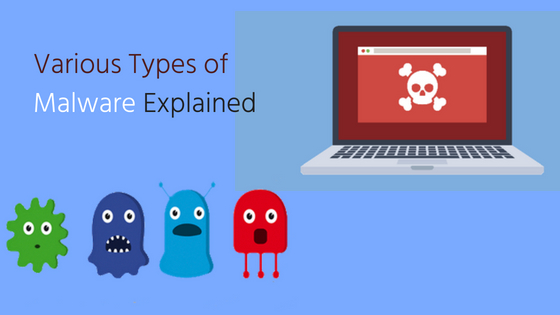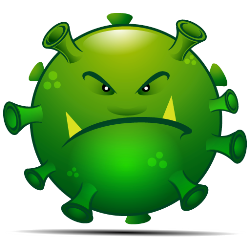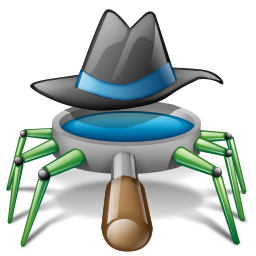Various Types of Malware- Their Symptoms, Prevention and Removal

Malware is a bit of terrible news wrapped up in programming. That is the bottom line. Malicious software coded with the purpose of harming user, a framework, or a system is just the same old thing, yet what’s terrifying is its proceeding with development into new and undetectable types of threats.Malware is a bit of terrible news wrapped up in programming. That is the bottom line. Malicious software coded with the purpose of harming user, a framework, or a system is just the same old thing, yet what’s terrifying is its proceeding with development into new and undetectable types of threats.This post will define several of the most common types of malware with their symptoms, prevention and removal.
Viruses
A computer virus is the thing that the vast majority of the media and regular end-users call each malware program reported in the news. A virus is a type of malware that is capable of replicating itself and spreading to different PCs.Fortunately, most malware programs aren’t viruses. This is common to viruses that they are covert, making it difficult to identify their presence on a system without dedicated security programs called antivirus. Basically, they arrive uninvited, cover up in mystery and more often than not work in lack of clarity which makes them particularly hard to clean up. The best antivirus programs battle with doing it effectively and in many (if not most) cases will basically isolate or erase the infected file instead.
Worms
Worms have been around even longer than computer viruses, they design them to copy themselves. However, a worm is a standalone software that replicates without targeting and infecting specific records that are already present on a PC.Several other worms, including SQL Slammer and MS Blaster are planned to spread and do not attempt to change the systems that they go through.What makes an effective worm so devastating is its ability to spread without end-user action. Worms ordinarily show up through email and texts, and regularly limit themselves their activities to what they can achieve inside the application that moves them. They utilize a PC system to spread, depending on security disappointments on the target PC with a specific end goal to get to it, and erase information.
Trojan Horse
Trojans are currently thought to be the most dangerous of all malware. They are considered as the weapon of choice for hackers as they are designed to steal the financial information of a user. Trojans masquerade as legitimate programs, but they contain malicious instructions. Some deceptive kinds of Trojans really claim to remove the viruses in the system, but instead introduce viruses.Trojans are difficult to shield against for two reasons: They’re easy to compose and spread by deceiving end-users which a fix, firewall, and other customary guard can’t stop. Malware journalists draw out Trojans by the millions every month. Antimalware merchants attempt their best to battle Trojans, however there are an excessive number of marks to stay aware of.
Rootkits
A rootkit is a collection of software specifically designed to allow to allow malware that assembles data, into your system without being detected by security programs. Erasing a rootkit is difficult due to their stealthy operation. So, reinstalling the OS is often the only solution to get rid of such a progressed rootkit.Rootkit detection depends upon manual methods for example, observing computers behaviour for unpredictable action, signature scanning, and storage dump analysis. Its discovery and media attention presented users to considerably more genuine vulnerabilities.
Ransomware
Ransomware is a standout amongst the most progressive and always on the ascent nowadays. Ransomware has often crippled companies, hospitals, police departments, and even entire cities. It is a type of malware that blocks access to the data of a victim, threating to either publish it or delete it until a ransom is paid.The motive of ransomware is that it restricts user access to the computer either by encrypting files on the hard drive or securing the system and showing messages that are proposed to constrain the user to pay the malware maker to evacuate the limitations and recapture access to their computer.
Keyloggers
Keylogger records every keystroke entry made on a computer and send it to the attacker. Keyloggers are not able of recording information that is typed using virtual keyboard or other input devices but however physical keyboards are in danger with this kind of malware. It is used for criminal purpose like capturing username, passwords, and financial information.
Adware
If you’re lucky, the only malware program you’ve come in contact with is adware, because it is the most lucrative and least harmful designed with the objective of displaying ads on your computer. Adware refers to any program that is supported by advertising, malicious adware typically demonstrates advertisements as popups and windows that can’t be shut.A common adware program examples include pop-up ads on websites and advertisements that are displayed by software.
Spyware
Spyware- as the name suggest, is a software that constantly spies on you. Spyware is most often used by people who want to keep track internet activities in order to send adware. Of course, criminals can use spyware to log the keystrokes of victims and gain access to passwords or intellectual property without other partys knowledge.Adware and spyware programs are normally the easiest to remove, often because they aren’t nearly as nefarious in their intentions as different sorts of malware.
Malware Symptoms
Computers that are infected with malware can exhibit any of the following symptoms:
- Increased CPU usage
- Freezing or crashing
- Modified or deleted files
- Strange computer behaviour
- Showing off strange or unknown files
- Email being sent without the knowledge of user
Preventing and Removing Malware
Some malware cases require exceptional prevention and treatment strategies, however following these proposals will incredibly build a usre’s protection from an extensive variety of malware:
- Install and run anti-malware and firewall software.
- Keep software and operating system up to date with current vulnerability patches.
- Be attentive while downloading files, attachments etc.
- Always download software from the official link or from a trusted website.
- Don’t tap on links in emails from unknown senders.
- Try not to download and open email connections- unless you can verify the source.













Comments